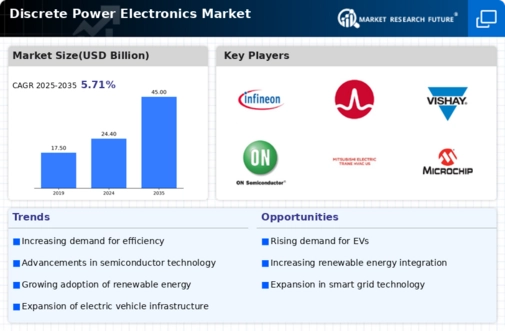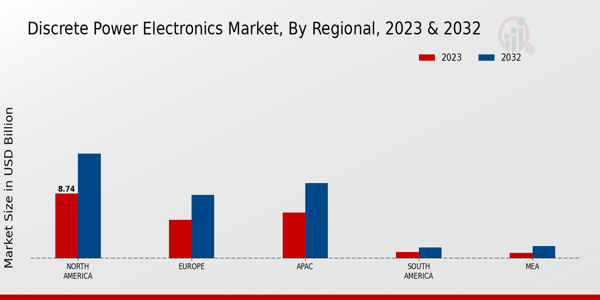The Discrete Power Electronics Market is characterized by its dynamic nature, highly competitive landscape, and rapid technological advancements. As industries increasingly prioritize energy efficiency and cost-effectiveness, the demand for discrete power electronic components has surged across various sectors, including consumer electronics, automotive, renewable energy, and industrial automation. This has led to significant investments in research and development, driving innovation and enabling companies to enhance their product offerings. Market players are working diligently to develop advanced materials and designs that optimize performance while minimizing energy loss, thereby gaining a competitive edge in an evolving marketplace.
The competitive insights reveal that companies are also focusing on strategic partnerships, mergers, and acquisitions to bolster their market presence and expand their customer bases.Analog Devices is well-positioned in the Discrete Power Electronics Market due to its strong focus on innovation and high-quality product offerings. The company's strengths lie in its comprehensive portfolio of analog and mixed-signal integrated circuits, which are known for their performance and reliability. Analog Devices has established a solid presence in multiple sectors where discrete power electronics are essential, leveraging its expertise in signal processing and power management.
The company's commitment to research and development allows it to introduce cutting-edge technologies that meet the evolving needs of its customers. With a robust distribution network and a reputation for exceptional customer service, Analog Devices is able to maintain strong relationships with clients and respond swiftly to market demands. This strategic positioning enhances its competitive advantage and allows it to capitalize on emerging opportunities in the market.Infineon Technologies is a key player in the Discrete Power Electronics Market, renowned for its extensive range of power semiconductor solutions.
The company boasts significant strengths in its ability to develop products tailored to high-efficiency applications, particularly within the automotive and industrial sectors. Infineon's proprietary technologies enable it to provide solutions that address the growing demands for energy efficiency, reliability, and performance. The company has established itself as a leader in the field of power management, benefiting from a well-developed infrastructure that supports large-scale production and rapid innovation cycles. Infineon Technologies also emphasizes sustainability and environmental responsibility in its business operations, aligning its product development with trends toward greener technologies.
This approach not only enhances its brand reputation but also positions the company favorably against competitors in an increasingly eco-conscious market.















